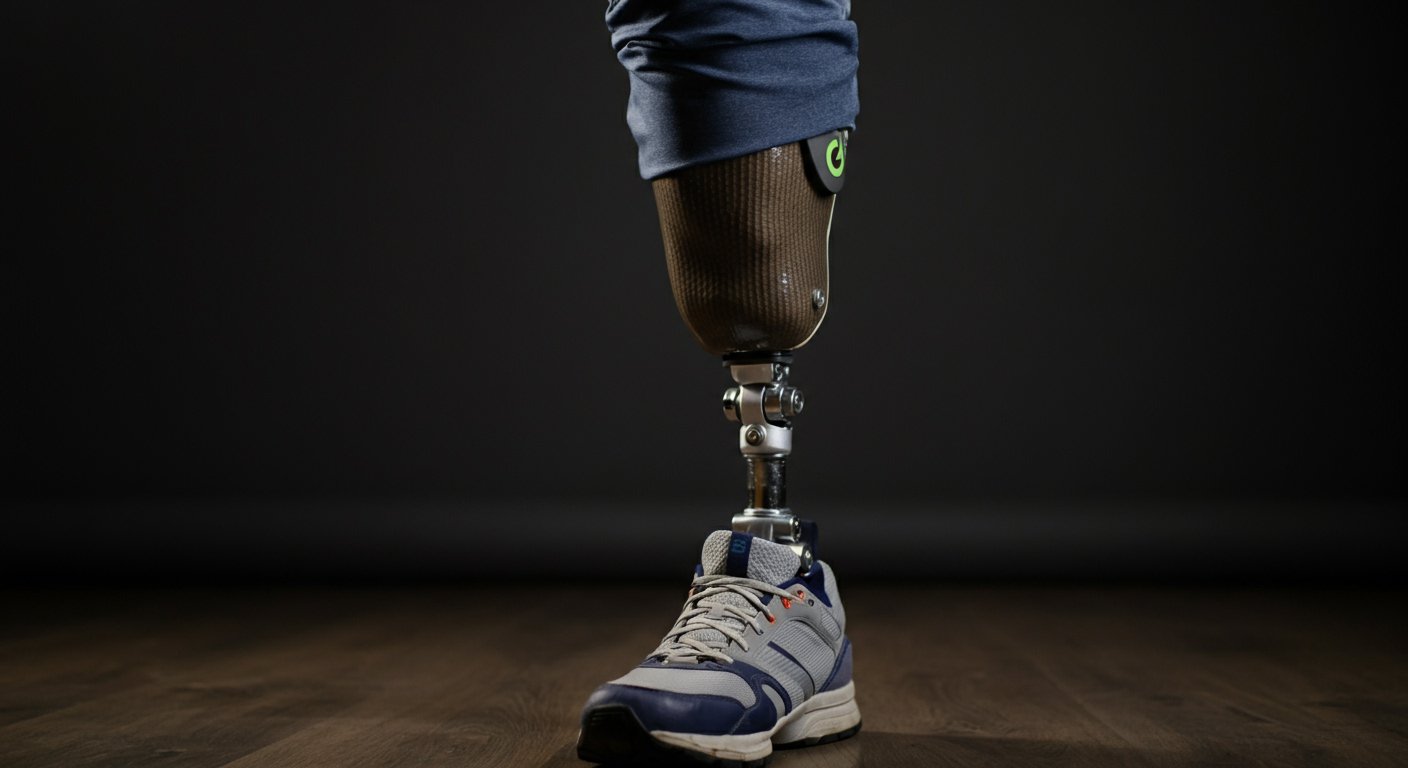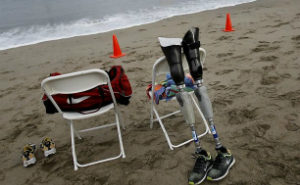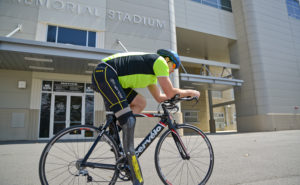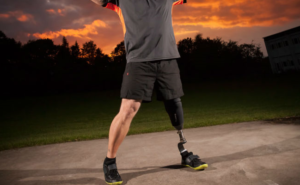Choosing the right below-knee prosthesis is a significant and highly personal decision. Whether you're seeking to regain mobility, maintain an active lifestyle, or simply achieve everyday comfort, learning about your options can seem overwhelming. Don't worry—we are here to guide you through the choices. Let’s look at different types of below-knee prosthetics, their costs, recent developments, and tips for achieving the best fit. Ready to learn more? Let's get started!
Key Points:
- Types of Prosthetics: Options range from everyday models to those designed for specific activities like sports. Advanced designs with features like microprocessors or lightweight materials such as carbon fiber enhance comfort and functionality.
- Cost Range: Prices can range from $3,000 to over $70,000, depending on materials and technology. Insurance typically covers most expenses, and additional aid options are available through organizations like the Amputee Coalition.
- For Active Lifestyles: High-performance prosthetics, including energy-storing feet and models support activities like running and hiking.
- Maintenance: Daily cleaning and inspections are critical. Trial periods ensure a proper fit before committing long-term.
- Adaptation: A good fit, proper hygiene, and therapy are key to improving comfort and mobility. Mental health support and community groups can also provide valuable assistance.
- Advancements: Innovations like 3D printing, hydraulic ankle mechanisms, and microprocessor systems are improving mobility options.
- Financial Aid: In addition to insurance, groups like Limbs for Life offer financial assistance, although documentation is often required.

What Are the Options for Below-Knee Prosthetics?
If you're considering a below-knee prosthesis, several great options meet your needs. Common types include everyday models, activity-specific prosthetics, and advanced high-tech designs. Everyday models work well for basic tasks like walking, while activity-specific options cater to pursuits such as running or swimming. Advanced prosthetics equipped with features like microprocessor-controlled motion adapt to uneven surfaces, providing an easier walking experience. Learn more about prosthetic leg parts.
The materials used in prosthetics also influence performance. Lightweight options like carbon fiber and silicone provide durability and ease of movement. Modular designs are popular, allowing users to make adjustments or swap components over time.
Adjusting to life with a prosthetic takes effort, but the right fit is essential to avoid discomfort. Over time, you'll develop familiarity with your prosthetic, improving mobility and independence. Therapy and guidance from experts help immensely.
How Much Do Below-Knee Prosthetics Cost?
A below-knee prosthetic can range from $3,000 to more than $70,000. Standard models for everyday use typically fall between $3,000 and $10,000, while advanced models with features such as computerized systems or custom parts can exceed $50,000. Costs depend on factors such as the materials used, the level of technology, and customization needs.
High-quality materials like carbon fiber or titanium increase durability but also raise costs. Bionic components, such as microprocessor-controlled ankles, mimic more natural movements, often making them ideal for active users. However, these features may not be necessary for everyone.
Most insurance plans cover at least part of the cost, so reviewing your policy's details is critical. Organizations like Amputee Coalition offer financial aid for people without sufficient insurance. Keep in mind that prosthetics need adjustments and replacements every three to five years, so budgeting for long-term expenses is equally important. For more details, visit Hopkins Medicine.
What Are the Best Prosthetics for Active Lifestyles?
Choosing the right prosthesis can make all the difference if you enjoy an active lifestyle. Prosthetics with energy-storing feet are a top choice, as they reduce strain on your muscles by storing and releasing energy during movement. This feature is handy for activities like running, hiking, or playing sports. There are a variety of choices, but you should discuss it with your physician and physical therapist first.
How to Get Financial Assistance for Below-Knee Prosthetics?
Financial help for below-knee prosthetics is often available, starting with health insurance. Most insurers cover prosthetics, although eligibility frequently depends on meeting specific criteria. For example, you may need to supply documentation showing that the device helps improve your mobility and quality of life. It's a good practice to ask your provider in advance about what's required for pre-authorization and coverage limits.
If insurance coverage isn't enough, organizations like the Amputee Coalition and Limbs for Life can assist by providing free prosthetics or financial aid. Many prioritize applicants with pressing needs or serious financial difficulties. Local charities may also help, so take time to research resources in your area.
Grants are another option, although applications typically require supporting documents such as medical records, proof of income, and personal statements. A well-prepared application can increase your chances of approval and speedy processing. A patient advocate can help you navigate these steps and make the process easier to manage.
What Maintenance Does a Below-Knee Prosthesis Require?
Maintaining a below-knee prosthesis involves routine cleaning and inspections. Start each day by checking for signs of wear on sockets, straps, and moving parts. By addressing issues early, you can prevent damage and ensure comfort.
Daily cleaning helps your prosthesis last longer and supports hygiene. Clean the liner with warm water and mild soap, rinsing thoroughly before letting it dry. Wipe the exterior with a damp cloth to remove debris, avoiding harsh chemicals that can harm materials or skin.
For additional care tips, check out this guide.
How Can You Walk Comfortably with a Below-Knee Prosthesis?
Comfortable walking often starts with getting a proper fit. A well-fitted prosthesis prevents discomfort and reduces pressure sores. Work closely with your prosthetist to find the ideal socket fit, and promptly address any spots where pressure or discomfort occurs.
Daily hygiene matters, too. Clean your residual limb and the prosthetic liner routinely to avoid skin irritation and keep swelling in check. If swelling persists, compression wraps may be helpful. Talk to your care team about any ongoing issues.
When learning to walk, start by focusing on distributing your weight evenly. Balance training with tools like parallel bars can help you find your rhythm. Strive for natural leg movements to achieve a steady gait. Physical therapy programs can provide helpful exercises and guidance for mastering these techniques. At Horton's O&P, we have a full-time physical therapist on staff to ensure proper fitting and personalized support throughout your journey. View more tips here.
What Advancements Have Been Made in Below-Knee Prosthetics?
Recent innovations are transforming the experience of using below-knee prosthetics. Materials such as carbon fiber make prosthetics lighter and more comfortable to wear while improving motion. Systems featuring hydraulic mechanisms or microprocessors adjust to walking speeds or terrain in real-time, offering smoother movements.
3D printing has also grown in popularity, enabling faster, more personalized socket designs. These advancements make getting around easier and reduce strain on the body.
How to Prepare for Life with a Below-Knee Prosthetic?
Adjusting to life with a below-knee prosthetic involves both physical and psychological changes. Initially, your body might experience swelling or sensitivity as it adapts. Collaborating with a prosthetist ensures that your socket fits correctly and minimizes discomfort.
Psychological adaptation can take time, too. Feelings of frustration or anxiety are natural, but connecting with others who use prosthetics or joining a support group can help. Counselors and community resources are often great for emotional support.
Balance exercises and physical therapy can aid recovery and build strength. For example, practicing standing balance or walking on smooth surfaces gradually builds mobility. Over time, you can expand to more strenuous physical activities. Stay active at your own pace, focusing on exercises that suit your situation. Learn more about prosthetic knees here.
Let Horton’s Orthotics and Prosthetics Fit You With the Right Below the Knee Prosthesis
Below-knee prosthetics can have an incredible impact, helping you move comfortably and regain independence. We've covered key topics, from types and costs to modern advancements and care tips. Making the right choice depends on your needs and preferences, but with proper care and ongoing support, a prosthesis can improve your quality of life. Take the opportunity to explore these solutions, and look forward to restoring your mobility and confidence. Get in touch today. We will be happy to discuss fitting you with a below-the-knee prosthesis.



